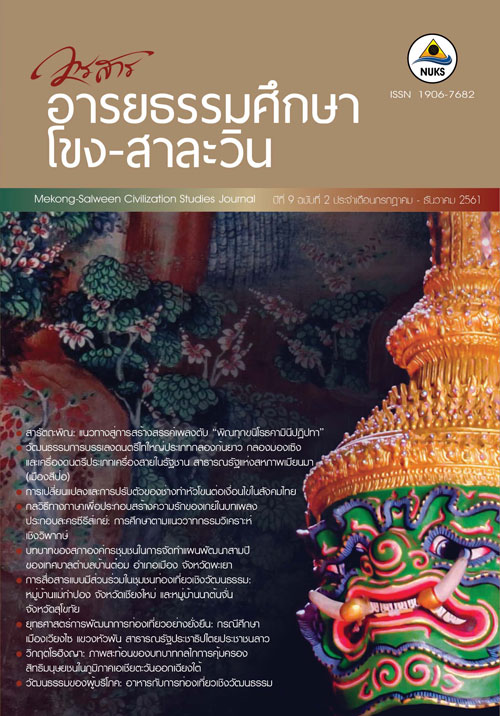Community organization council’s roles on Ban Tom Sub-district Municipality Three-Year plan Mueang District, Phayao Province
Main Article Content
Abstract
The paper “Community organization councils’ roles on Ban Tom Sub-district Municipality Three-Year plan” aims to address two main objectives as followings. First, to explore the roles of Community organization councils’ towards Ban Tom Sub-district Municipality Three-Year plan drafting process. Secondly, it aims to investigate the collaboration between Community organization councils and local government unit in constructing local development plan. The research findings were obtained via focus group discussions and in-depth Interview. The key informants and interviews were conducted with representatives from three groups of stakeholders; Ban Tom community organization council, Ban Tom Sub-district Municipality, and the associated public sector units. Moreover, participatory observation was carried out to triangulate the data. Ultimately, descriptive analysis was the selected to analyze the findings.
The research result found that Ban Tom community organization councils played as an important role as problem detector, problem solving advisor, and development plan provider for Ban Tom Sub-district municipality. These roles are complied with the Community Organizations Act, B.E. 2551. Ban Tom community organization councils took part in two main committees of Ban Tom Sub-district municipality which are Ban Tom Sub district Development Committee and Ban Tom Sub-district municipality Development Plan Drafting and organizing the community public hearing. These platforms for community hearing ranged from village level to sub-district levels. The Ban Tom community organization council members are the main actors who carry out the public hearing mechanism. The public hearing has instigated the people’s willingness and eager in public participation. The constituents have learned their right and duties as citizen within the community which allows them to be responsible for the community. Thus, this community mechanism would provide transparency, equality, and enable the creativity from the community.
Downloads
Article Details
References
Bantom Sub-district Plan. (2016). Phayao: Community Development office, Mueang Phayao district.
Boonratanapan, P. (2006). Community Empowerment by Community Development Movement. Bangkok: love and lippress Printing.
Chiangthong, S. (2015). The Role of the Community Organization Council in Promoting
Community Organization Council ACT, B.E. 2008. (8 February 2008). Royal Thai Government Gazette. 125(31ก).
26-38.
Creighton, J. (2005). The Public Participation Handbook Making Better Decisions Through Citizen Involvement.
San Francisco: Jossey-Bass.
Edwards, M. (2014). Civil Society. 3th Ed. Massachusetts: Polity Press.
Pradap, R. (2013). Community Organization Council: New Politics and The Challenge to Local Power Groups, King Prajadhipok Journal, 11(2), 113-128.
Puangngam, K. (2010). Community and Local Self Governance. Bangkok: Bophit Printing.
Thinbangtiao, O. (2014). Mechanism and Process of People Participation in Local Self- Government: A Case Study of Local Government Organization in Eastern Seaboard Province, Journal of politics, administration and law, 6(3),
131-152.
Three year plan 2014-2016. (2014). Phayao: Bantom Sub-district Municipality.
Valaisathien, P, et al. (2003). The process and techniques of the developer. Bangkok: Usa Printing.

